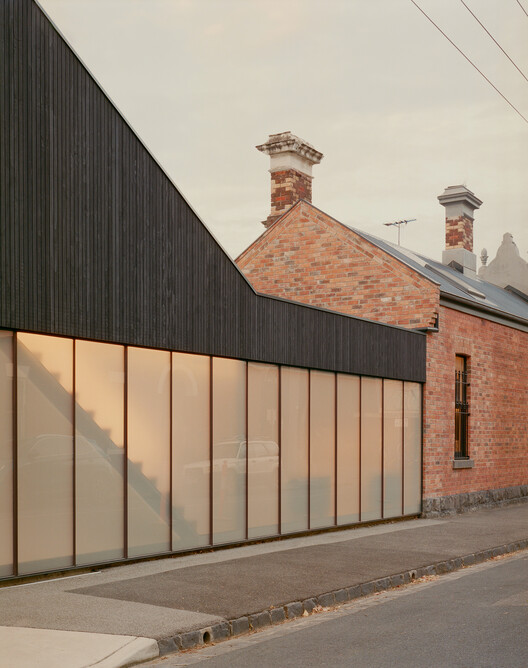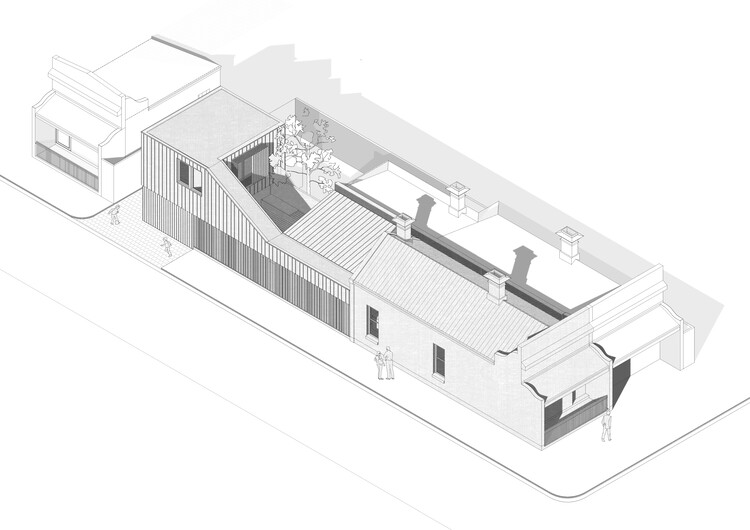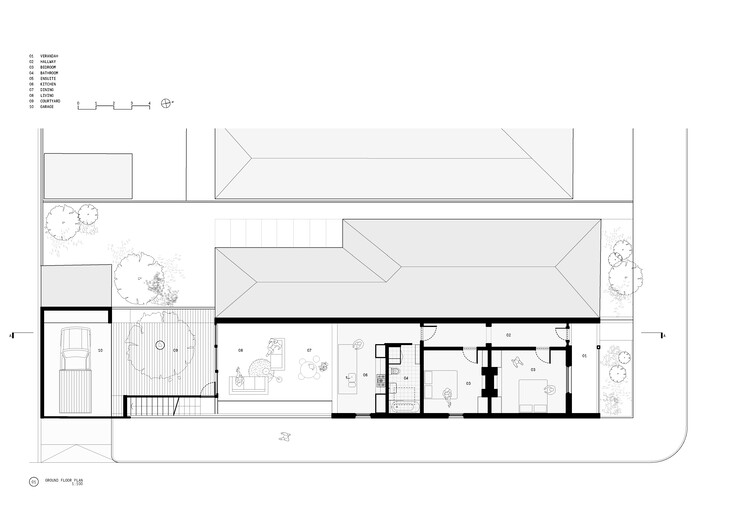






Text description of the architects. House B is a renovation for a young family. A bold extension of a historic terrace is defined by a translucent glass wall that illuminates the new living spaces, registering the blurred movements behind them while ensuring security and privacy from the street.

Trapped and shaded by a jumble of slender additions built by its previous owners over 60 years, the project aimed to open up and bring light into a typically narrow terrace by taking advantage of a prominent corner location.



The new extension respects its historical context and ensures that the original terrace retains its prominent significance. It extends across the living spaces and then rises to the rear of the block, ensuring that neighbors are not overshadowed and a new courtyard is created throughout the day. The side of the extension is bordered by a translucent glass wall, bringing light into the new living spaces, registering the blurred movements behind them while ensuring security and privacy from the street.



Rather than an expansive expansion, the strategy allowed minimizing floor space and creating multifunctional and related spaces, “concentrating” the budget into a smaller area, and allowing for greater detail and resolution throughout the cost-effective project. The bedrooms and wet areas are split between the front, historic terrace for children and visitors and the retreat for new parents above the garage at the rear of the block.

The line where the renovated terrace meets its extension is strongly demarcated externally and internally by form and material, with a full-width opening supported by a pronounced steel frame in the rear wall clearly marking this transition. Materials and finishes are applied in blocks of color or texture to define different elements of the home. The existing house has been renovated to highlight its original details and ornamentation, contrasting with brighter and more restrained new spaces combining steel framing and glazing and plywood joinery.


Building schemes prioritized those that owners could carry out themselves to minimize subcontracting work or the need for skilled tradespeople. Many materials were either repurposed – for example, the original bricks from the demolished portion of the old house were cleaned and re-laid on site – or other materials were sourced to convert leftovers or offcuts into the final product, saving construction costs and waste.
House B was built on the land of the Wurundjeri people.

